A Synthesis of Feminine Principle, Matriarchy, Synarchy, and Sacred Union
A White Paper exploring the emergence of Sacred Feminine Leadership through the integration of ancient wisdom traditions and evolutionary consciousness frameworks
Executive Summary
We stand at a threshold moment in human evolution where the re-emergence of the Sacred Feminine principle is not merely cultural correction, but an essential evolutionary imperative for planetary and species survival. This white paper explores how Sacred Feminine Leadership represents a fundamental shift from patriarchal dominance structures toward synarchic governance models that honor the marriage of feminine and masculine principles within both individual consciousness and collective organizational frameworks.
Drawing from matriarchal wisdom traditions, the Western Hermetic Qabalistic framework, and the archetypal understanding of consciousness evolution, we present a comprehensive philosophy for understanding how Sacred Feminine Leadership operates as both personal transformation and societal healing modality. This leadership paradigm transcends gender binaries to activate the receptive, intuitive, collaborative, and life-sustaining qualities necessary for navigating our current global challenges.

I. The Philosophical Foundation: Reclaiming the Feminine Principle
The Sacred Feminine as Universal Force
The Sacred Feminine represents far more than gender politics or social activism—it embodies a fundamental cosmic principle of receptivity, creation, nurturing, and cyclical wisdom that has been systematically suppressed in patriarchal civilizations for millennia. In the Western Hermetic tradition, this principle corresponds to the receptive aspects of divine consciousness, the Shekinah or divine presence that manifests through matter and form.
The Feminine Principle operates through:
- Receptive Intelligence: The capacity to receive, synthesize, and birth new forms of consciousness
- Cyclical Wisdom: Understanding life as spiraling rather than linear progression
- Collaborative Power: Strength through unity and interconnection rather than domination
- Intuitive Knowing: Direct perception beyond rational analysis
- Life-Sustaining Ethics: Decisions based on impact to seven generations forward
Historical Perspectives: From Matriarchy to Patriarchy
Archaeological evidence suggests that early human societies operated through matriarchal or matrilineal systems where feminine wisdom guided community decisions. These cultures typically exhibited:
- Earth-based spirituality that honored natural cycles and seasons
- Collaborative governance through councils and collective decision-making
- Economic systems based on gift exchange and resource sharing rather than accumulation
- Conflict resolution through mediation and restoration rather than punishment
- Child-rearing practices that honored the full community as responsible for each child’s development
The shift to patriarchal dominance brought linear hierarchies, competitive individualism, and extractive relationships with both human communities and the natural world. While this transition enabled certain technological and social developments, it also created the systemic problems we face today: environmental destruction, social inequality, perpetual warfare, and spiritual disconnection.

From Patriarchy to Synarchy
Traditional patriarchal leadership models operate through hierarchical dominance, competition, and the suppression of emotional and intuitive intelligence. Synarchy, derived from the Greek meaning “joint rule,” represents a governance model where authority flows through wisdom, service, and collaborative stewardship rather than accumulated power.
Sacred Feminine Leadership embodies synarchic principles by:
- Governing through consensus and collective wisdom
- Prioritizing ecological and social sustainability over profit maximization
- Integrating emotional and spiritual intelligence into decision-making processes
- Honoring diverse perspectives and lived experiences
- Creating regenerative rather than extractive systems
II. The Sacred Marriage: Integration of Feminine and Masculine Principles
Understanding Complementary Consciousness
True leadership emerges from the inner marriage of feminine and masculine principles within individual consciousness. This sacred marriage is not about gender but about the integration of complementary cosmic forces that exist within all beings regardless of biological sex.
Masculine Principle (Yang):
- Focused intention and direction
- Analytical discrimination
- Structural organization
- Active manifestation
- Protective strength
- Linear thinking and goal achievement
Feminine Principle (Yin):
- Receptive awareness and spaciousness
- Intuitive synthesis
- Organic flow and adaptation
- Creative gestation
- Nurturing presence
- Cyclical wisdom and process orientation
When these principles achieve dynamic balance within leadership consciousness, the result is what we call “Sacred Union Leadership”—governance that serves life rather than ego, that builds rather than destroys, that includes rather than excludes.
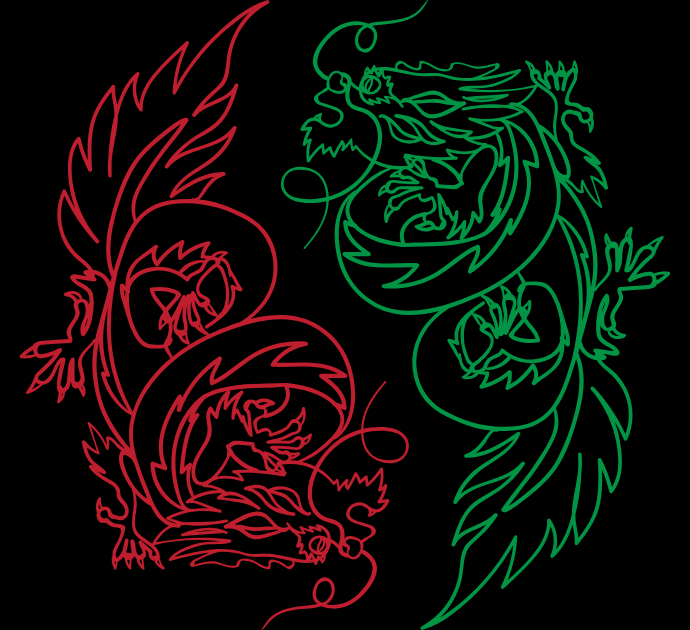
The Alchemical Process of Integration
The marriage of feminine and masculine within consciousness follows an alchemical process of transformation:
Nigredo (Shadow Phase): Recognition and integration of unconscious patterns, projections, and wounds that prevent authentic leadership. This includes both tyrannical masculine dominance and manipulative feminine victim consciousness.
Albedo (Purification Phase): Development of conscious skills, emotional intelligence, and spiritual awareness. The leader begins to embody both masculine clarity and feminine receptivity without falling into rigid stereotypes.
Rubedo (Integration Phase): Transcendent leadership that operates from the sacred marriage within. The leader becomes a transparent vessel for higher wisdom to flow through, serving life itself rather than personal ego.

The Three Stages of Leadership Evolution
Unconscious Leadership: Operating from unconscious fears, projections, and survival patterns. Leaders at this stage create systems of domination, extraction, and separation.
Conscious Leadership: Integration of skills, talents, and wisdom in service to others. The leader develops emotional intelligence, collaborative skills, and systemic thinking.
Sacred Leadership: Transcendent leadership that operates from pure service to life itself. The leader embodies the sacred marriage and serves as a conduit for collective wisdom and healing.
III. Qabalistic Framework: The Tree of Life and Leadership Consciousness
The Western Hermetic Perspective
The Qabalistic Tree of Life provides a sophisticated map of consciousness that reveals how Sacred Feminine Leadership operates through the integration of all ten Sephiroth (divine emanations). This ancient framework maps both macrocosmic divine structure and microcosmic human consciousness development.
For Sacred Feminine Leadership, particular attention must be paid to:
Binah (Understanding): The Great Mother, representing receptive intelligence and the capacity to birth form from formless potential. This is the seat of Sacred Feminine wisdom in leadership—the ability to hold space for new possibilities to emerge.
Chokmah (Wisdom): The Great Father, representing dynamic creative force. In Sacred Feminine Leadership, this principle is not suppressed but integrated in service to life-sustaining creation.
Tiphareth (Beauty): The Heart Center where the marriage of opposites occurs. This is where authentic leadership consciousness emerges through the integration of all polarities—the seat of compassionate authority.
Malkuth (Kingdom): The physical realm where leadership manifests practical results. Sacred Feminine Leadership must be grounded in tangible service to the world, not lost in spiritual abstractions.
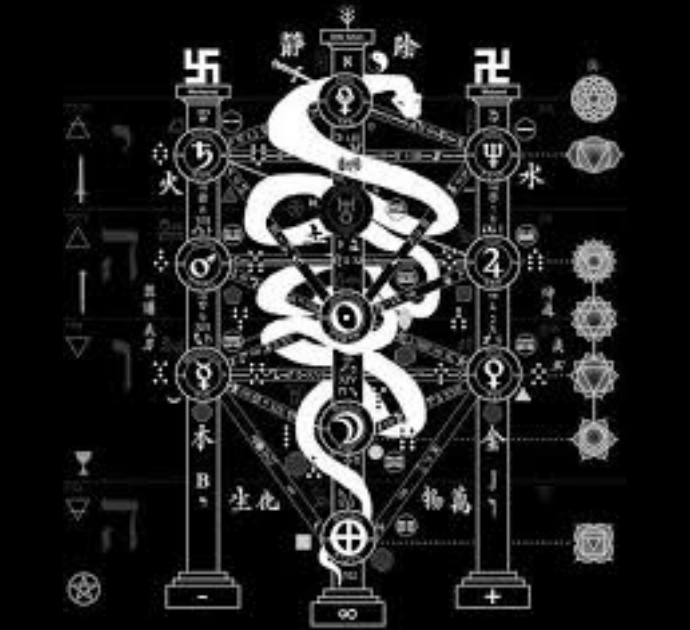
The Four Worlds of Leadership Expression
The Qabalistic framework recognizes four worlds or levels of reality where leadership operates:
Atziluth (Emanation): The world of pure spiritual vision and divine will. Sacred Feminine Leaders must maintain connection to transcendent purpose.
Briah (Creation): The world of archetypal forms and creative intelligence. Leaders work with universal principles and patterns.
Yetzirah (Formation): The world of emotions, relationships, and psychological dynamics. Leaders must master emotional intelligence and interpersonal skills.
Assiah (Action): The physical world of practical manifestation. Leaders must produce tangible results that serve collective wellbeing.
The Lightning Flash of Leadership Manifestation
The Qabalistic Lightning Flash represents the path of divine manifestation from pure potential to physical reality. Sacred Feminine Leadership follows this same pattern:
- Divine Will (Kether): Receiving inspiration and purpose from transcendent source
- Wisdom (Chokmah): Understanding the underlying principles and patterns
- Understanding (Binah): Giving form and structure to visionary wisdom
- Mercy (Chesed): Expanding the vision with love, generosity, and inclusion
- Severity (Geburah): Applying discrimination, boundaries, and necessary limits
- Beauty (Tiphareth): Balancing all forces through heart-centered integration
- Victory (Netzach): Persisting through emotional and relational challenges
- Glory (Hod): Communicating the vision with clarity and authenticity
- Foundation (Yesod): Building sustainable structures and processes
- Kingdom (Malkuth): Manifesting tangible results in the physical world
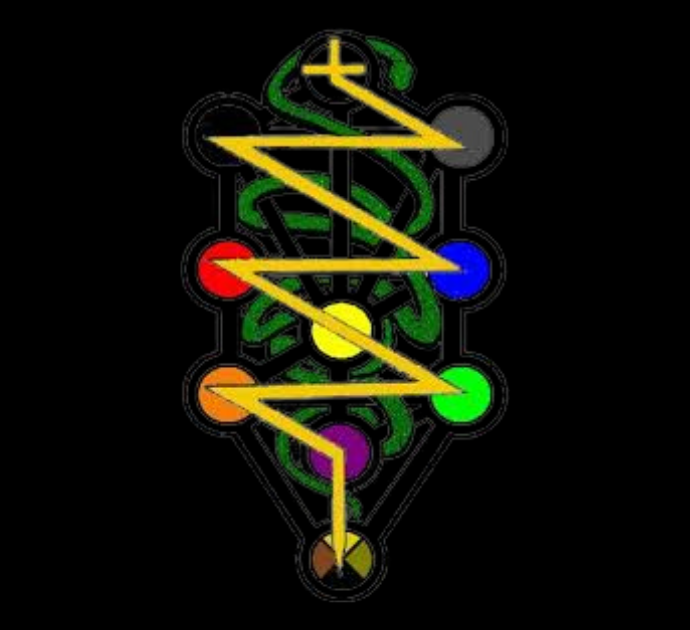
IV. Archetypal Patterns of Sacred Feminine Leadership
The Divine Feminine Archetypes
Sacred Feminine Leadership expresses through various archetypal patterns that represent different aspects of divine feminine consciousness:
The Priestess: Represents the leader who governs through intuitive wisdom and receptive awareness. She accesses collective wisdom through deep listening and inner knowing, making decisions from connection to the sacred.
The Mother/Empress: Embodies creative leadership that nurtures growth and abundance. She leads through creating conditions for others to flourish rather than through control and domination.
The Wise Woman: Demonstrates leadership through patient cultivation of wisdom and long-term vision. She honors cycles, seasons, and natural timing in all endeavors.
The Warrior Goddess: Shows how fierce protection and compassionate strength can coexist. She fights for justice and protection of the vulnerable while maintaining connection to love.
The Healer: Represents transformational leadership that addresses root causes rather than symptoms. She works with wholeness and integration rather than fragmentation.
The Crone: Embodies the wisdom of completion, transition, and spiritual authority that comes from having traveled the full cycle of experience.

Leadership Qualities and Expressions
Sacred Feminine Leadership manifests through specific qualities that differ from traditional masculine leadership models:
Presence over Performance: Leading through authentic being rather than impressive doing. Creating space for others to discover their own wisdom rather than providing all the answers.
Process over Product: Honoring the journey of development and transformation rather than focusing solely on end results. Understanding that how something is achieved matters as much as what is achieved.
Collaboration over Competition: Building collective capacity and shared leadership rather than hoarding power and information. Recognizing that individual success depends on collective thriving.
Intuition over Analysis: Integrating emotional and spiritual intelligence with rational analysis. Making decisions from whole-being awareness rather than purely mental calculation.
Sustainability over Speed: Taking time for deep roots, organic development, and long-term viability rather than quick fixes and immediate gratification.
V. Practical Applications: Sacred Feminine Leadership in Action
Organizational Transformation
Sacred Feminine Leadership transforms organizational culture through specific practices and structures:
Circle Governance: Moving from hierarchical command structures to collaborative councils where decisions emerge from collective wisdom. This includes regular check-ins, consensus-building processes, and shared responsibility for outcomes.

Emotional Intelligence Integration: Creating workplace cultures that honor the full spectrum of human experience. This means providing support for grief and celebration, conflict transformation skills, and recognition that emotions contain valuable information for decision-making.
Regenerative Business Models: Developing economic systems that give back more than they take. This includes B-Corporation structures, stakeholder capitalism, and business models that prioritize social and environmental impact alongside financial sustainability.
Mentorship and Development: Focusing on growing others’ leadership capacity rather than maintaining power concentration. This involves identifying and developing emerging leaders, creating succession planning, and building organizational resilience through distributed leadership.
Restorative Justice Approaches: Handling conflicts and mistakes through healing and learning rather than punishment and exclusion. This creates cultures of accountability that strengthen rather than weaken relationships.

Personal Development Practices
Individuals seeking to embody Sacred Feminine Leadership can engage in specific developmental practices:
Shadow Integration Work: Honest examination of unconscious patterns, projections, and wounds that sabotage authentic leadership expression. This includes working with fears of power, perfectionism, people-pleasing, and other limiting patterns.
Contemplative Practices: Regular meditation, prayer, or contemplative practice to maintain connection to transcendent purpose and inner wisdom. This provides the groundedness necessary for authentic leadership.
Embodiment Practices: Yoga, dance, martial arts, or other practices that integrate mind, body, and spirit. Sacred Feminine Leadership must be embodied, not just intellectually understood.
Nature Connection: Regular time in natural settings to remember humanity’s place within larger ecological systems. This provides perspective and guidance for sustainable decision-making.
Community Practice: Participating in women’s circles, men’s groups, or mixed-gender councils to develop collaborative leadership skills and receive feedback on leadership style.

Societal Healing Applications
Sacred Feminine Leadership offers specific approaches for addressing collective challenges:
Environmental Restoration: Leadership that prioritizes ecological regeneration and sees environmental health as foundational to all other forms of wellbeing. This includes biomimicry in organizational design and decision-making processes that consider impact on natural systems.
Social Justice and Equity: Addressing systemic inequality through restorative rather than punitive approaches. This involves truth and reconciliation processes, reparative justice, and economic models that redistribute resources fairly.
Healthcare Transformation: Moving toward integrative healing approaches that address root causes of illness rather than just symptoms. This includes mental health support, community healing initiatives, and healthcare systems that honor diverse healing traditions.
Educational Reform: Creating learning environments that honor multiple intelligences, different cultural approaches to knowledge, and the development of emotional and spiritual intelligence alongside intellectual capacity.
Economic Innovation: Developing alternative economic models such as gift economies, time banks, local currencies, and cooperative ownership structures that prioritize wellbeing over wealth accumulation.
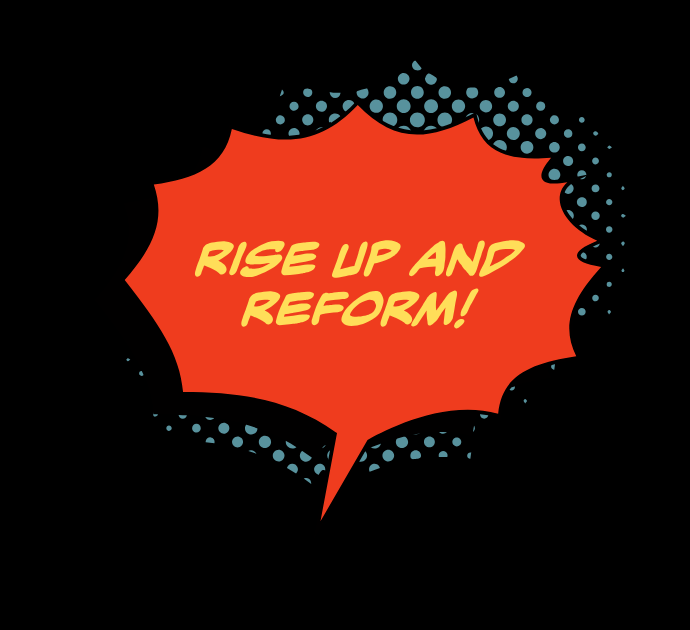
VI. Challenges and Shadow Aspects
The Shadow of Sacred Feminine Leadership
Even Sacred Feminine Leadership contains shadow expressions that must be acknowledged and integrated:
Spiritual Bypassing: Using feminine spirituality to avoid taking decisive action or confronting difficult realities. This manifests as excessive passivity, indecisiveness, or retreat into spiritual practice to avoid worldly responsibilities.
Victim Consciousness: Manipulating through perceived powerlessness rather than owning authentic strength. This includes guilt-tripping, emotional manipulation, and refusing to take responsibility for personal agency.
Exclusive Feminism: Creating new forms of hierarchy that exclude masculine perspectives or marginalize those who don’t conform to certain expressions of femininity. This reproduces oppression dynamics with different players.
Perfectionism and Martyrdom: Holding unrealistic standards for self and others, or sacrificing personal wellbeing in service to others in ways that create resentment and burnout.
Emotional Reactivity: Confusing emotional expression with emotional intelligence, or using feelings as justification for harmful behavior rather than as information for conscious response.

Integration Challenges
Leaders seeking to embody Sacred Feminine principles face several practical challenges:
Cultural Resistance: Operating within systems that reward masculine dominance patterns while attempting to model different approaches. This requires enormous patience and strategic thinking about when to conform and when to transform.
Internal Conditioning: Overcoming personal programming that equates receptivity with weakness, collaboration with inefficiency, or emotional expression with unprofessionalism.
Balancing Polarities: Learning to access both feminine and masculine qualities as situations require without falling into rigid role definitions or spiritual bypassing.
Maintaining Boundaries: Developing the capacity to be open and receptive without becoming overwhelmed, depleted, or taken advantage of by those operating from unconscious patterns.
Resource Limitations: Creating sustainable change while working within economic and political systems that often punish values-based leadership with reduced resources or opportunities.
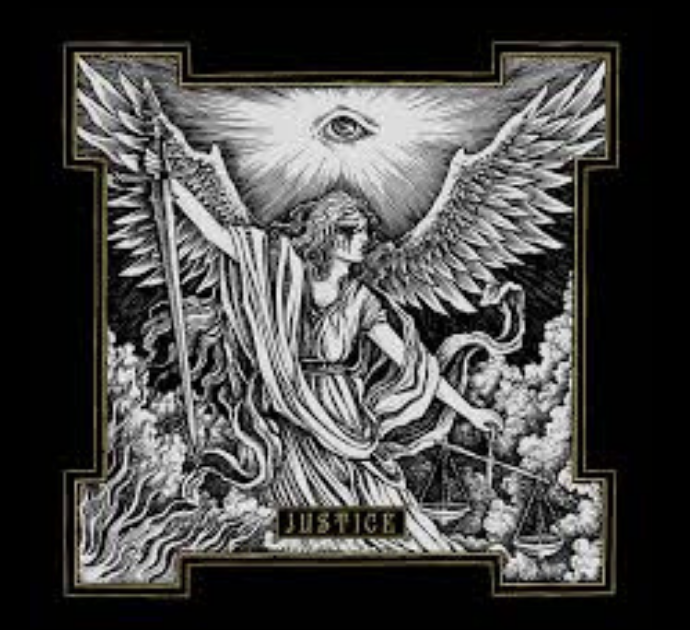
VII. The Evolutionary Perspective: Why Now?
Planetary Crisis as Initiation
The current convergence of ecological crisis, social upheaval, technological disruption, and spiritual awakening represents what many wisdom traditions recognize as an initiation moment for human consciousness. The patriarchal systems that have dominated for millennia are proving inadequate to address challenges that require:
- Long-term thinking beyond quarterly profit cycles and electoral terms
- Collaborative solutions that transcend national, cultural, and religious boundaries
- Integration of rational analysis with emotional, spiritual, and somatic intelligence
- Regenerative approaches that heal rather than further damage natural and social systems
- Decision-making processes that include voices that have been historically marginalized
The Consciousness Evolution Movement
Humanity appears to be undergoing a fundamental shift in consciousness—moving from unconscious reactive patterns to conscious creative response. This evolution involves:
Individual Transformation: Growing numbers of people engaging in shadow work, spiritual practice, and conscious development to heal personal wounds and develop authentic leadership capacity.
Collective Awakening: Communities, organizations, and movements developing new models for collaboration, governance, and resource sharing based on interconnection rather than separation.
Planetary Consciousness: Recognition that human wellbeing is inseparable from ecological health and that decisions must be made from a global rather than merely local perspective.
Cosmic Perspective: Understanding that Earth exists within larger galactic and universal systems and that human evolution may be connected to cosmic cycles and purposes beyond our current comprehension.
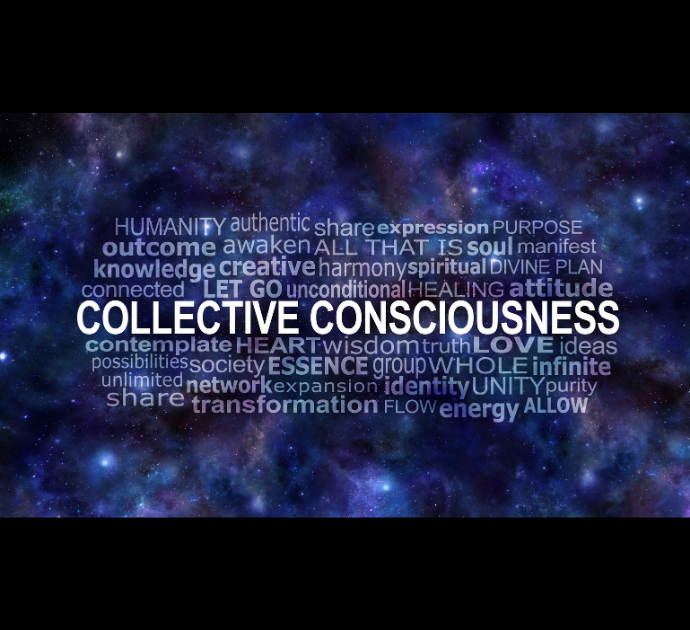
Technology and Sacred Feminine Leadership
The digital age has created both unprecedented connection and profound alienation. Sacred Feminine Leadership offers frameworks for:
Conscious Technology Use: Approaching digital tools as extensions of human consciousness rather than replacements for human connection. This includes using technology to enhance rather than substitute for embodied relationship.
Digital Wisdom: Maintaining presence, discernment, and spiritual grounding while engaging with rapidly changing technological landscapes. This involves regular digital detox practices and conscious boundaries around screen time and information consumption.
Platform Creation: Building digital platforms and communities that serve collective wisdom, healing, and empowerment rather than individual ego gratification or corporate profit extraction.
Artificial Intelligence Integration: Considering how to develop and deploy AI technologies in ways that support rather than replace human wisdom, creativity, and spiritual development.

VIII. Future Directions and Emerging Possibilities
Post-Gender Leadership Consciousness
As our understanding of gender evolves beyond binary categories, Sacred Feminine Leadership points toward post-gender consciousness that honors the full spectrum of human expression while maintaining connection to the archetypal feminine and masculine principles that operate beyond biological sex or social identity.
This evolution involves:
- Recognition that all beings contain both feminine and masculine principles regardless of gender identity
- Development of leadership models that access the full range of human capacities
- Creation of inclusive spaces that honor diverse expressions of sacred feminine and masculine qualities
- Movement beyond gender-based oppression toward liberation for all beings
Planetary and Cosmic Consciousness
Sacred Feminine Leadership naturally extends toward planetary consciousness—leadership that considers Earth as a living system and humanity as one expression of planetary intelligence rather than separate from or superior to nature.
This expansion includes:
- Biomimicry in organizational and social design
- Decision-making processes that include the voices of future generations and non-human beings
- Economic models based on ecological principles of reciprocity and regeneration
- Recognition of indigenous wisdom keepers as essential guides for planetary healing
Some visionaries suggest that human consciousness evolution is connected to larger galactic cycles and that Sacred Feminine Leadership represents our species’ preparation for participation in wider cosmic community.

The Return of the Goddess
Many spiritual traditions speak of a prophesied return of the Divine Feminine after millennia of patriarchal dominance. This “return” may manifest through:
Individual Embodiment: Growing numbers of people (of all genders) learning to embody divine feminine qualities in daily life and leadership roles.
Cultural Renaissance: Revival of goddess spirituality, earth-based religions, and feminine wisdom traditions alongside development of new integrative spiritual frameworks.
Institutional Transformation: Religious, educational, political, and economic institutions evolving to include feminine wisdom and values in their foundational structures.
Ecological Healing: Restoration of healthy relationship between human civilization and the natural world, recognizing Earth as sacred mother rather than resource to be exploited.

Emerging Leadership Models
New forms of Sacred Feminine Leadership are emerging that combine ancient wisdom with contemporary innovation:
Regenerative Leadership: Models that heal and restore rather than simply sustain existing systems. This includes leaders who work with trauma healing, ecosystem restoration, and community rebuilding.
Biomimetic Leadership: Organizational structures based on natural systems such as mycorrhizal networks, forest ecosystems, and cellular organization patterns.
Intuitive Leadership: Decision-making processes that integrate multiple ways of knowing including rational analysis, emotional intelligence, somatic awareness, and spiritual guidance.
Ceremonial Leadership: Integration of ritual, ceremony, and sacred practice into organizational and community life to maintain connection to transcendent purpose and collective meaning.

IX. Implementation Framework: Practical Steps for Transformation
Personal Leadership Development
Phase 1: Foundation Building (Months 1-6)
- Establish regular contemplative practice (meditation, prayer, journaling)
- Begin shadow work through therapy, coaching, or self-reflection practices
- Develop body awareness through movement, yoga, or somatic practices
- Study wisdom traditions related to Sacred Feminine consciousness
- Join or create a practice community for mutual support and accountability
Phase 2: Skill Development (Months 6-18)
- Practice collaborative leadership in low-stakes environments
- Develop emotional intelligence and communication skills
- Learn facilitation techniques for group processes and conflict transformation
- Study systems thinking and ecological design principles
- Engage in service projects that align with Sacred Feminine values
Phase 3: Integration and Service (Months 18+)
- Take on leadership roles that allow expression of Sacred Feminine principles
- Mentor others in conscious leadership development
- Create or transform organizational cultures to reflect new paradigms
- Contribute to community healing and social justice initiatives
- Share wisdom through teaching, writing, or other forms of expression

Organizational Transformation
Assessment Phase
- Evaluate current organizational culture, structures, and practices
- Identify areas where Sacred Feminine principles could enhance effectiveness
- Assess readiness for change among leadership and staff
- Develop metrics for measuring transformation progress
Pilot Phase
- Implement small-scale experiments in circle governance, collaborative decision-making, or emotional intelligence integration
- Provide training in communication skills, conflict transformation, and systems thinking
- Create spaces for regular check-ins, feedback, and course correction
- Document learning and best practices for broader implementation
Integration Phase
- Revise organizational structures, policies, and procedures to reflect Sacred Feminine values
- Develop new hiring, promotion, and evaluation criteria that include emotional and spiritual intelligence
- Create regenerative business models that prioritize stakeholder wellbeing alongside financial sustainability
- Establish mentorship and succession planning programs focused on developing conscious leaders
Community and Societal Change
Local Level
- Organize community circles for collaborative decision-making on local issues
- Develop local currency, time banking, or gift economy initiatives
- Create community gardens, healing spaces, and educational programs
- Support local businesses and organizations that embody Sacred Feminine values
Regional Level
- Build networks of conscious leaders across sectors and communities
- Advocate for policy changes that support regenerative economics and restorative justice
- Develop regional food systems, renewable energy cooperatives, and other sustainable infrastructure
- Create educational and training programs for Sacred Feminine Leadership development
Global Level
- Participate in international networks focused on consciousness evolution and planetary healing
- Support indigenous wisdom keepers and traditional ecological knowledge systems
- Advocate for international policies that prioritize ecological and social wellbeing
- Contribute to global conversations about alternative economic and governance models

Conclusion: The Sacred Marriage of Leadership
Sacred Feminine Leadership in the 21st century represents far more than a correction to patriarchal excess. It offers a comprehensive reimagining of what leadership can be when it emerges from the sacred marriage of feminine and masculine principles within integrated consciousness.
Through the synthesis of ancient wisdom traditions including matriarchal governance models, Western Hermetic teachings, and archetypal understanding of consciousness development, we see that authentic leadership serves life itself rather than ego gratification. It governs through love rather than fear, creates abundance rather than scarcity, and honors the interconnection of all beings.
The Alchemical Transformation
The emergence of Sacred Feminine Leadership represents an alchemical transformation occurring at multiple levels simultaneously:
Individual Level: Leaders learning to integrate shadow and light, masculine and feminine, human and divine aspects of consciousness in service to collective wellbeing.
Organizational Level: Institutions evolving from hierarchical dominance structures toward collaborative, regenerative models that serve all stakeholders including future generations.
Societal Level: Cultures shifting from patriarchal values of competition, extraction, and separation toward feminine values of cooperation, regeneration, and interconnection.
Planetary Level: Humanity remembering its place within larger ecological and cosmic systems and learning to live in sustainable relationship with Earth and all beings.

The Evolutionary Imperative
The leaders who will guide humanity through current planetary challenges and toward conscious evolution will be those who have integrated the sacred marriage within themselves. They will access both receptive feminine wisdom and focused masculine clarity as situations require. They will serve from deep recognition that individual wellbeing is inseparable from collective flourishing.
This is not merely a preference or ideal—it is an evolutionary imperative. The complexity of current global challenges requires leadership that can:
- Think systemically across multiple generations and scales
- Collaborate across difference without losing essential diversity
- Make decisions from both analytical clarity and intuitive wisdom
- Create regenerative rather than extractive systems
- Hold space for transformation while maintaining practical effectiveness
The Sacred Feminine as Evolutionary Force
The Sacred Feminine represents the evolutionary force itself—the creative principle that births new forms from the marriage of existing elements. In times of breakdown and breakthrough, this force becomes particularly active, calling forth new expressions of consciousness and social organization.
Sacred Feminine Leadership serves as both midwife and offspring of this evolutionary moment. Through conscious individuals willing to embody the sacred marriage of complementary principles, new realities are being born that serve life rather than death, love rather than fear, wholeness rather than fragmentation.

The Call to Service
As we stand at this evolutionary threshold, the Sacred Feminine calls each of us to examine our own relationship to power, authority, and service. It asks:
- How can I serve life rather than ego?
- How can I lead from wholeness rather than woundedness?
- How can I integrate receptive and active principles in my leadership style?
- How can my individual healing contribute to collective transformation?
- How can I be both humble student and confident teacher?
The answers to these questions will not come from intellectual understanding alone, but from the willingness to engage in the alchemical process of transformation—to allow the sacred marriage to occur within our own consciousness and then to serve as vessels for its expression in the world.
A Vision for the Future
Imagine organizations where decisions emerge from collective wisdom rather than top-down authority. Imagine economic systems that measure success by wellbeing rather than wealth accumulation. Imagine political structures that consider the impact of decisions on seven generations forward. Imagine educational systems that develop emotional and spiritual intelligence alongside intellectual capacity.
Imagine communities where conflict becomes creative tension that births new solutions. Imagine healthcare that addresses root causes through community healing. Imagine technology developed in service to consciousness evolution rather than mere convenience or profit.
This is not utopian fantasy but practical possibility when enough individuals commit to embodying Sacred Feminine Leadership in their spheres of influence. The future belongs to those who can hold space for the new while honoring the wisdom of the ancient, who can lead with both strength and tenderness, who can serve from the fullness of who they are rather than the limitations of who they think they should be.

The Sacred Feminine calls us home to wholeness—not just as individuals, but as a species ready to take our conscious place in the ongoing creation of reality. Through Sacred Feminine Leadership, we midwife the birth of a new world that serves all beings and honors the sacred in everyday life.
The time is now. The leaders are us. The sacred marriage awaits our willingness to say yes to transformation and service.
“Above all things—Know Thyself.” The journey of Sacred Feminine Leadership begins and ends with the willingness to see ourselves clearly, to integrate our shadows and gifts, and to serve from the fullness of our authentic being in sacred relationship with all life.
High Priestess
Agape Coven
If you wish to be a little bit more inspired check out my poem that is based on this very paper at Sacred Feminine Leadership – A Poetic Reflection.
Bibliography and Further Study
Ancient Wisdom Traditions
- Eisler, Riane. The Chalice and the Blade: Our History, Our Future
- Gimbutas, Marija. The Language of the Goddess
- Stone, Merlin. When God Was a Woman
- Sjöö, Monica & Mor, Barbara. The Great Cosmic Mother
Qabalistic and Hermetic Sources
- Fortune, Dion. The Mystical Qabalah
- Gray, William G. The Ladder of Lights
- Knight, Gareth. A Practical Guide to Qabalistic Symbolism
- Regardie, Israel. The Tree of Life: A Study in Magic
Consciousness Evolution and Leadership
- Wilber, Ken. A Theory of Everything
- Beck, Don Edward & Cowan, Christopher. Spiral Dynamics
- Brown, Adrienne Maree. Emergent Strategy
- Wheatley, Margaret. Leadership and the New Science
Sacred Feminine and Archetypal Psychology
- Bolen, Jean Shinoda. Goddesses in Everywoman
- Murdock, Maureen. The Heroine’s Journey
- Woodman, Marion. The Pregnant Virgin
- Johnson, Buffie. Lady of the Beasts: The Goddess and Her Sacred Animals
Systems Thinking and Regenerative Models
- Meadows, Donella. Thinking in Systems
- Hawken, Paul. The Ecology of Commerce
- Korten, David. When Corporations Rule the World
- Hopkins, Rob. The Power of Just Doing Stuff
This white paper serves as foundation for ongoing exploration and practical application of Sacred Feminine Leadership principles in personal, organizational, and societal contexts. The synthesis of these wisdom traditions offers a roadmap for conscious leaders ready to serve the emergence of a more beautiful world.
